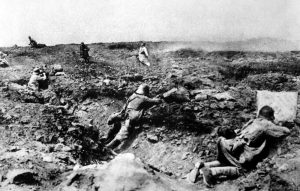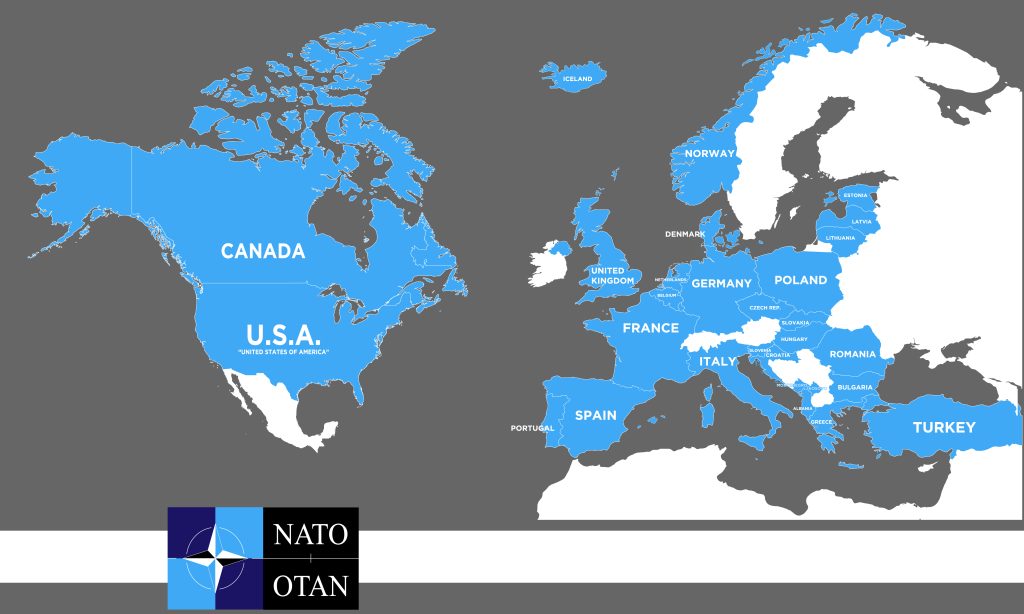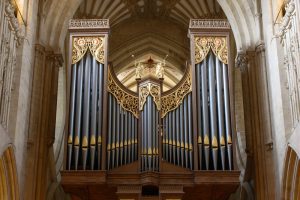With the rise of books and television shows that depict medieval warfare, there is an increasing rise in information about the weapons used during that time.
Not only is there an interest in actual weapons, but there is also an increased curiosity about exactly how these weapons were used, the military tactics of the time, and the advantages of certain weapons.
One of these weapons that have aroused curiosity is the trebuchet. Many wonder what it really is.
Essentially, a trebuchet is a form of a catapult that throws a large projectile with a long, swinging arm.
During the medieval period, this war machine was a very effective siege tool – even more so than the traditional catapult.
The main components of a trebuchet include five basic elements. These are the frame, beam, sling, counterweights, and a guide chute.
The development of this design allowed this machine to send heavier projectiles for further distances than other current war machines.
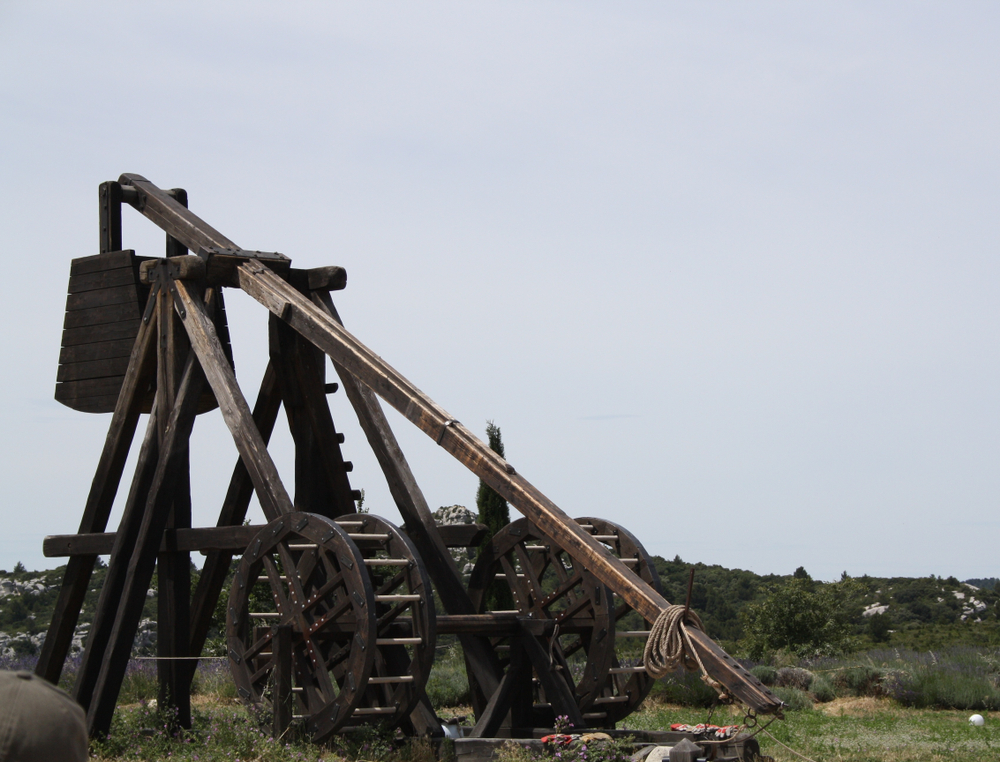
Table of Contents
How the components work together
The basis of a trebuchet is the frame. This supports all the other components of the machine.
It also provides a raised platform so that the counterweight can be dropped.
When the counterweight is dropped, it rotates the beam sheerly through the use of gravity. As the beam swings, it pulls the sling.
This motion causes the sling to build speed and hold the projectile until it is ready to be released.
Guiding the sling through the frame is the guide chute. It also provides support to the projectile until it reaches the right speed to be released.
All of these elements work together to produce a machine that can propel objects further than previous efforts.
The main types of trebuchets
Trebuchets were developed into two models. The first is the traction trebuchet, also called a mangonel.
This trebuchet type uses human power to swing the arm.
Originally developed in the 4th century by the Chinese, this technology made its way to the west through traders and migrants.
This can be seen in the 6th century when the Byzantines adopted this new form of war machine.
During the following centuries, other countries also began to use this new technology.
The other type of trebuchet is the stronger counterweight trebuchet, also known as a counterpoise trebuchet.
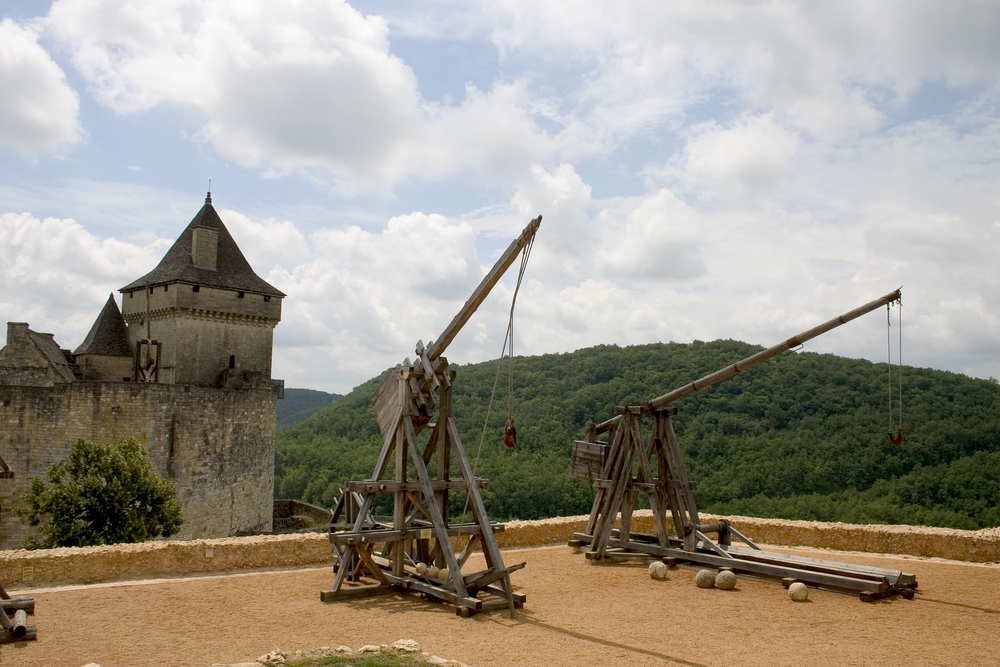
This type of war machine uses a counterweight to activate the arm rather than human force.
It became a popular weapon in the 12th century in the Mediterranean and later was used by the Mongols in China in the 13th century.
What is the difference between a trebuchet and a catapult?
Catapults and trebuchets may seem to be the same type of war machine; however, they are not.
While they are both used to throw objects, the biggest difference is the size and weight of the projectiles that can be used.
Trebuchets have the ability to throw much larger and heavier objects than catapults have the capacity to.
Which is better during a war: trebuchet or catapult?
The answer depends on the army’s need for a war machine that is highly mobile or one that can launch heavy projectiles over a great distance.
For most medieval battle situations, the trebuchet was much more valuable because of the capacity for payload and distance.
The catapult, however, is still an important piece of equipment when mobility and easier portability is needed.
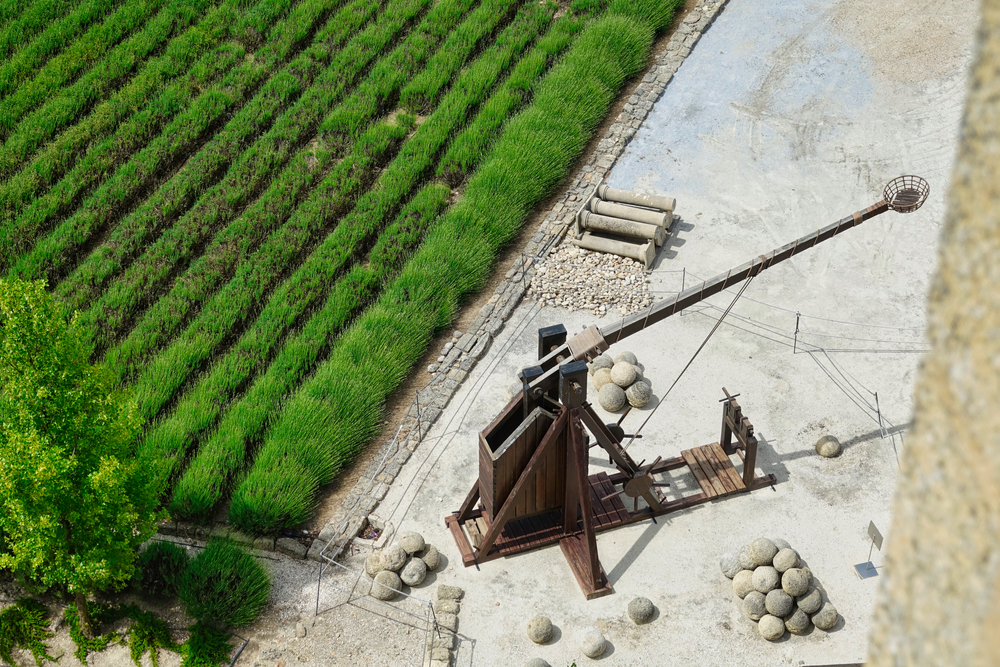
How is a counterweight trebuchet operated?
A counterweight trebuchet functions through the use of a large weight falling and providing a lever-type action.
The weight is held by a trigger mechanism that, when released, causes the weight to fall and the beam to pull the sling around.
This causes the sling to swing around in an arc into the air where the projectile is released.
The release mechanism on the trebuchet
At its most basic, the release mechanism on a trebuchet is a hook.
When the sling reaches a specific level of centrifugal force, it releases one side of the sling. This propels the projectile toward the target.
What makes the development of trebuchets so significant?
First, this type of war machine allowed armies to send heavier projectiles over a greater distance.
Secondly, it is a compound machine, meaning that it relies on the combination of several components to be able to achieve the desired goal.
Lastly, their development showed an understanding of the key sophisticated engineering concepts of potential energy, gravity, and acceleration.
Two types of counterweight design for trebuchets
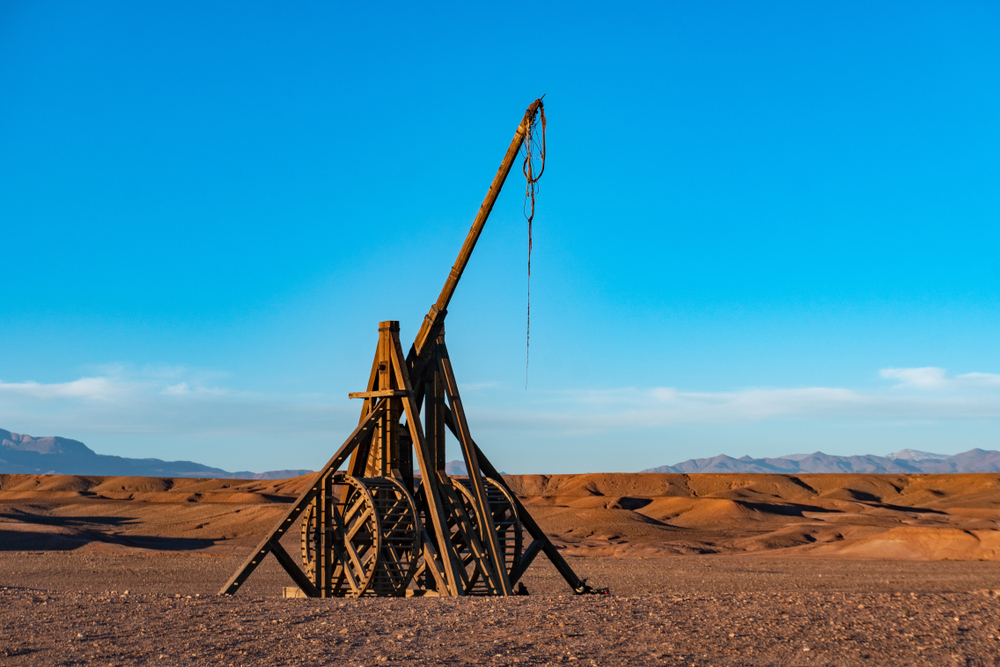
In a trebuchet with a hinged counterweight, the weight is allowed to drop toward the ground and swing the arm.
This delivers more speed and destructive power to the projectile. The other type is a fixed weight trebuchet where the weight, when released, follows an arc to move the lever arm.
The superiority of the trebuchet on the battlefield
As discussed, the trebuchet can fire heavier projectiles for greater distances than other types of war machines.
A typical trebuchet could fire mortars for 984 feet or 300 meters. While this is a standard average, different machines had varying power, firing rates, and ranges.
Competing medieval war equipment: warwolf
One war machine called the warwolf could throw projectiles 660 ft or 200 meters that weighed 298 lbs. or 135 kilograms.
This made it a valuable tool during siege situations.
Competing medieval war equipment: ballistas
Another type of war machine that is used to launch projectiles is the ballista. It was used to propel javelins or heavy stones.
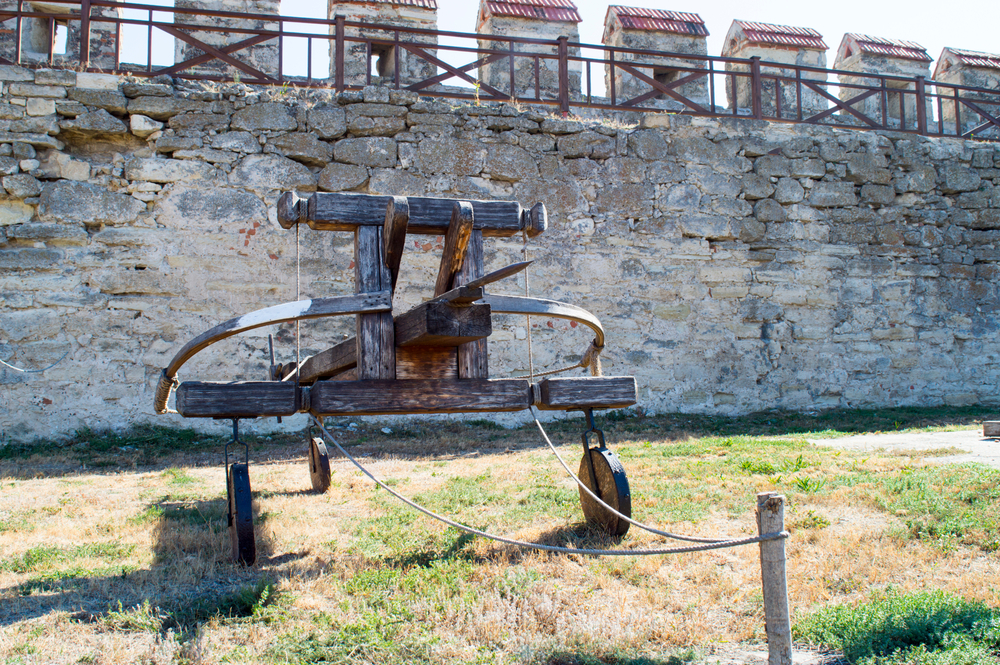
Ballistas had a range of 500 yards or 460 meters but were more effective and accurate at shorter ranges.
How do ballistas work?
These worked by using torque power from two coils of twisted coils. These were drawn through two arms.
The sheer force from the cords was what propelled the javelin or stone.
Comparative weapons to a ballista
A ballista can be compared to a very large crossbow. They both work on the principle of tension to create powerful propulsion.
Other similarities include the use of wood construction and ropes or cords to act as springs under tension.
Lastly, they both use ropes or cords created with animal sinew.
Which is better – a ballista or a trebuchet?
Both are efficient siege machines that were used during medieval military campaigns. While the ballista can be very effective with its crossbow design, many would argue that the trebuchet had a much more significant impact during conflict.
It is definitely a stark improvement over the technology used in catapults.
The lifespan of ballistas and catapults
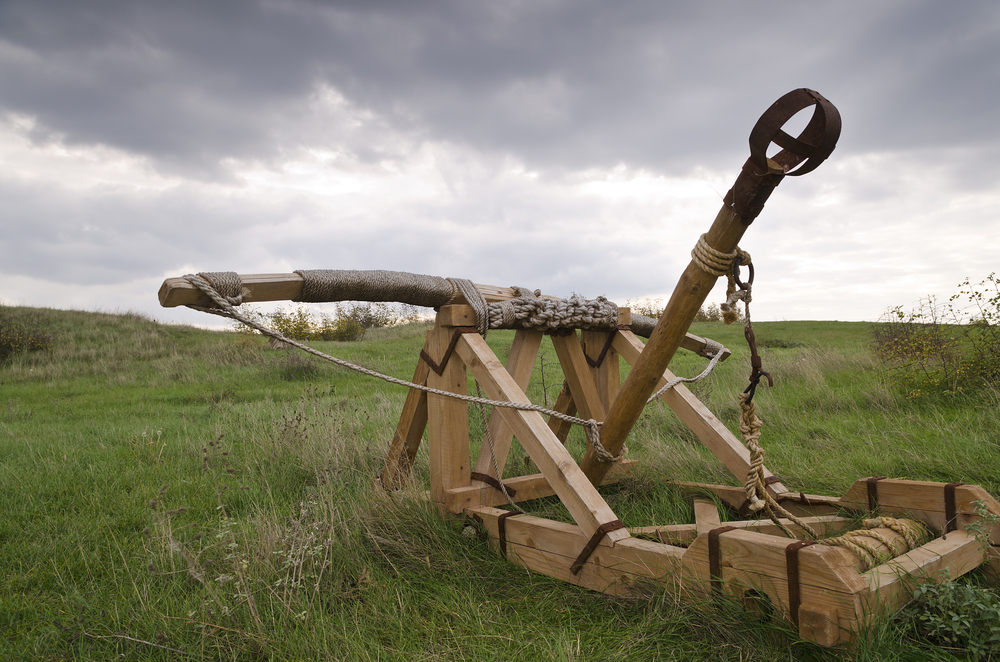
The technology used in ballistas and catapults faded from popularity and usefulness in 885–886 AD as new designs were created.
They continued to be used for small mortars and in situations that called for greater mobility. However, they became increasingly rare.
Benefits of trebuchets
As a military war machine used to attack fortifications, there have been several advantages of trebuchets mentioned.
These include the following:
- Ability to hurl heavier projectiles
- More robust than catapults and torsion-based equipment
- Longer firing range when compared to other war machines
Understanding and defining catapults
While trebuchets may have several clear benefits during siege operations, catapults also have benefits.
The word means “shield piercer.” This is because it was originally designed to fire darts larger than those fired by bows and crossbows for longer distances.
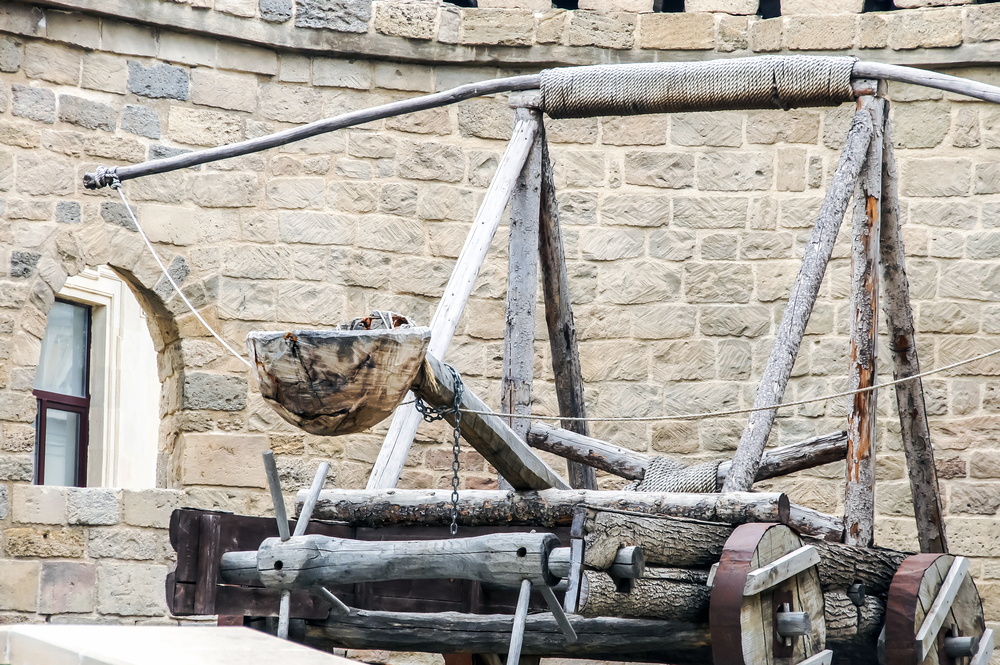
The commonalities among many early pieces of equipment were the reliance on torsion springs of animal sinew.
To understand the principle behind it, twist a rubber band around a pencil with a small projectile.
Upon letting it go, the rubber band will quickly untwist and throw the small projectile. This is how these larger machines operated.
Benefits of catapults
While they may not be able to propel objects as far as trebuchets, they can do things that other war machines cannot. This includes:
- Being extremely accurate
- Can be used as a sniping tool to target specific soldiers on fortification walls
- Have a range longer than a bow
- Can be used to target individuals and demoralize troops
This may seem to muddy the waters when it comes to deciding which war machine is best. It’s best to consider the usefulness and benefits of each machine in different situations.
It comes down to considering how each can be used tactically and strategically.
Looking Closer
Trebuchets require a lot of materials to construct. This makes them impractical pieces of equipment to take on a military campaign.
They require an immense amount of logistics to move – even if they are dissembled.
On the other hand, catapults are much easier to move. This is a relative comparison. Many catapults weigh up to 2 tons.
Also, the torsion springs that drive the catapult’s propulsion require a lot of animal sinews to create.
This means losing a lot of valuable cattle for the necessary materials. In comparison, a trebuchet only requires wood.
War machine materials
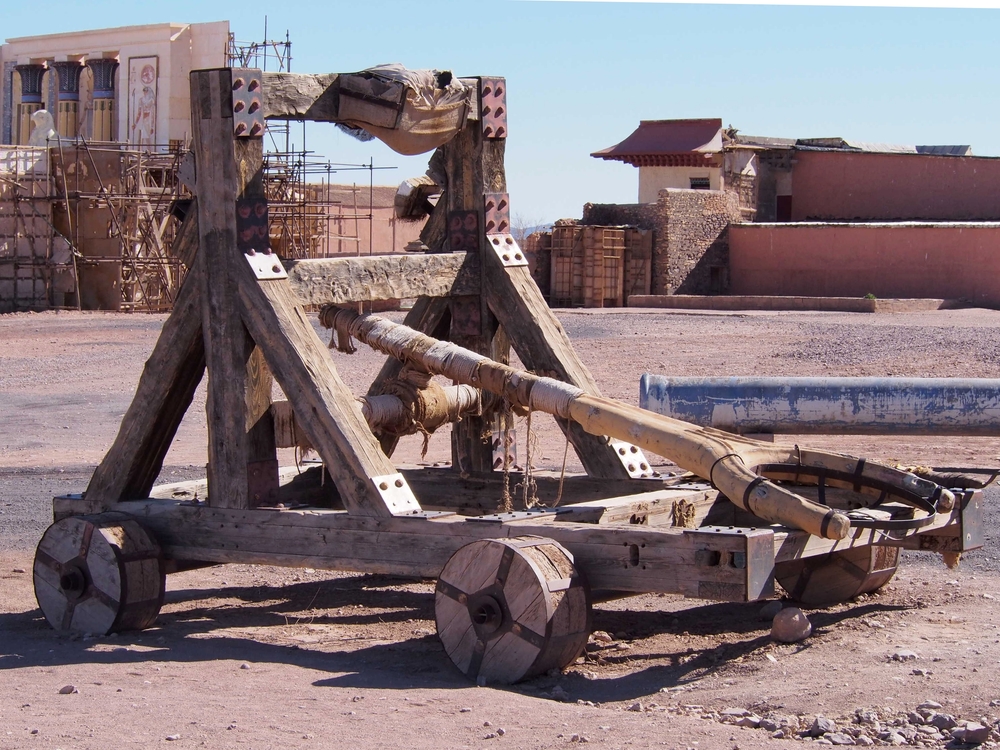
In looking at catapults and trebuchets, the materials used can make a difference. In areas where wood and lumber are abundant, creating a trebuchet would be easier.
For the torsion springs in catapults, the humidity and weather in a campaign area can stretch the strings requiring constant readjustment.
The weather becomes a difficult problem for torsion-driven weapons. The loosening of strings affects its aiming capacity.
Also, even though they are easier to move than trebuchets, they are still very heavy.
Lastly, due to their weight, they often cannot be put on wheels for easier movement. When fired, the sheer thrust of the war machine will cause it to lurch.
One remedy for catapults was to place them on top of hay bales to absorb the shock. Hay bales often had to be replaced after firing several times.
Wheels and war machines
Some dart throwers and two armed catapults could be placed on either wheels or carts. Another option was to mount them in the siege towers.
It just depends on the setting and the type of projectile.
Due to their lesser recoil, trebuchets can be placed on wheels. Doing so allows the war machine to absorb some recoil forces involved.
That being said, they still were not war machines that could be taken on military campaigns.
Historians in recent years have worked to recreate and test catapults and trebuchets. Through their work, a greater understanding has developed of how these war machines were made and how they were used.
This has greatly expanded our modern understanding of medieval warfare.
In conclusion, trebuchets played a significant role in medieval military warfare. The development of the design and technology demonstrated a significant understanding of engineering concepts.
On the surface, they may not seem to be elegant pieces of equipment, but they represent the development of sophisticated design.
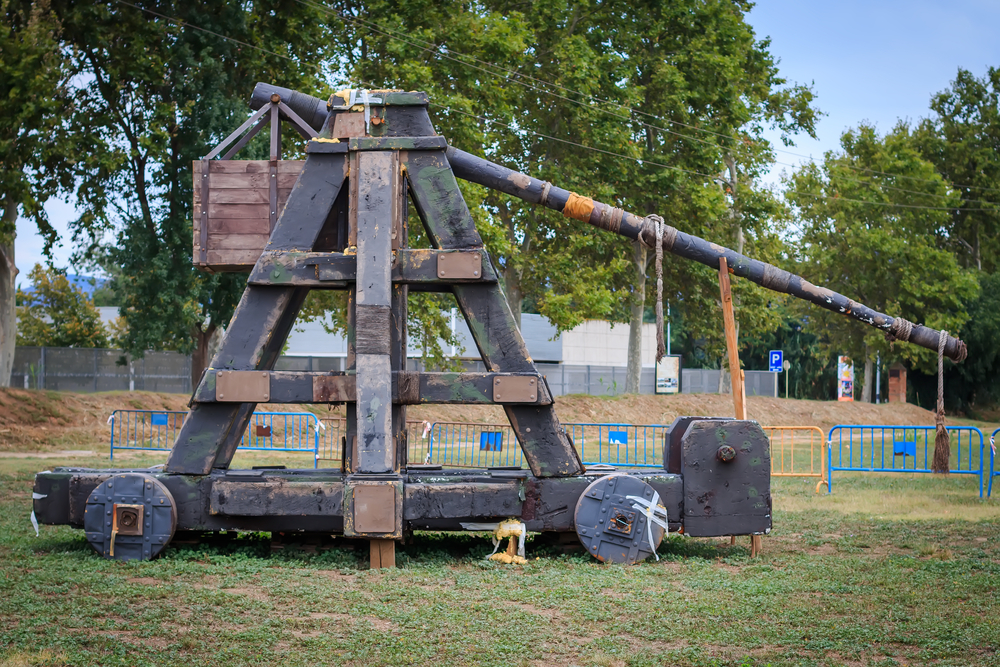
Trebuchets replaced many other types of military equipment used during the medieval period.
While the shift took generations and was not swift, the designs spread throughout the world.
Each new era adapted the equipment to meet the ever-changing strategies and techniques of warfare.





